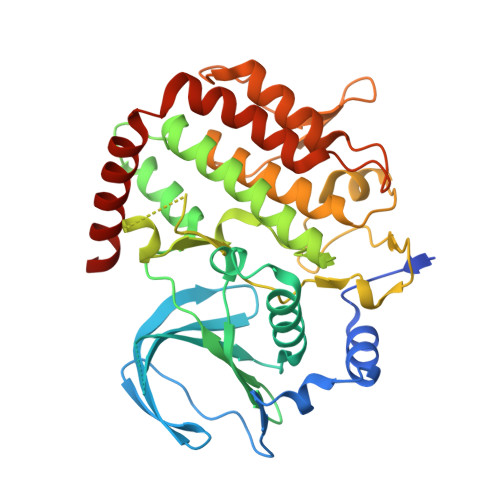Structure and substrate recruitment of the human spindle checkpoint kinase Bub1.
Kang, J., Yang, M., Li, B., Qi, W., Zhang, C., Shokat, K.M., Tomchick, D.R., Machius, M., Yu, H.(2008) Mol Cell 32: 394-405
- PubMed: 18995837
- DOI: https://doi.org/10.1016/j.molcel.2008.09.017
- Primary Citation of Related Structures:
4R8Q - PubMed Abstract:
In mitosis, the spindle checkpoint detects a single unattached kinetochore, inhibits the anaphase-promoting complex or cyclosome (APC/C), and prevents premature sister chromatid separation. The checkpoint kinase Bub1 contributes to checkpoint sensitivity through phosphorylating the APC/C activator, Cdc20, and inhibiting APC/C catalytically. We report here the crystal structure of the kinase domain of Bub1, revealing the requirement of an N-terminal extension for its kinase activity. Though the activation segment of Bub1 is ordered and has structural features indicative of active kinases, the C-terminal portion of this segment sterically restricts substrate access to the active site. Bub1 uses docking motifs, so-called KEN boxes, outside its kinase domain to recruit Cdc20, one of two known KEN box receptors. The KEN boxes of Bub1 are required for the spindle checkpoint in human cells. Therefore, its unusual active-site conformation and mode of substrate recruitment suggest that Bub1 has an exquisitely tuned specificity for Cdc20.
- Howard Hughes Medical Institute, The University of Texas Southwestern Medical Center, 6001 Forest Park Road, Dallas, TX 75390, USA.
Organizational Affiliation:


















